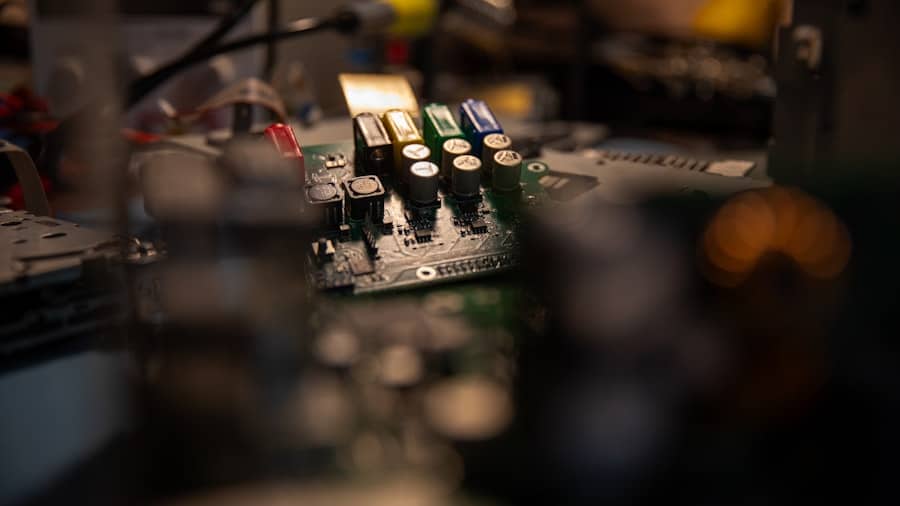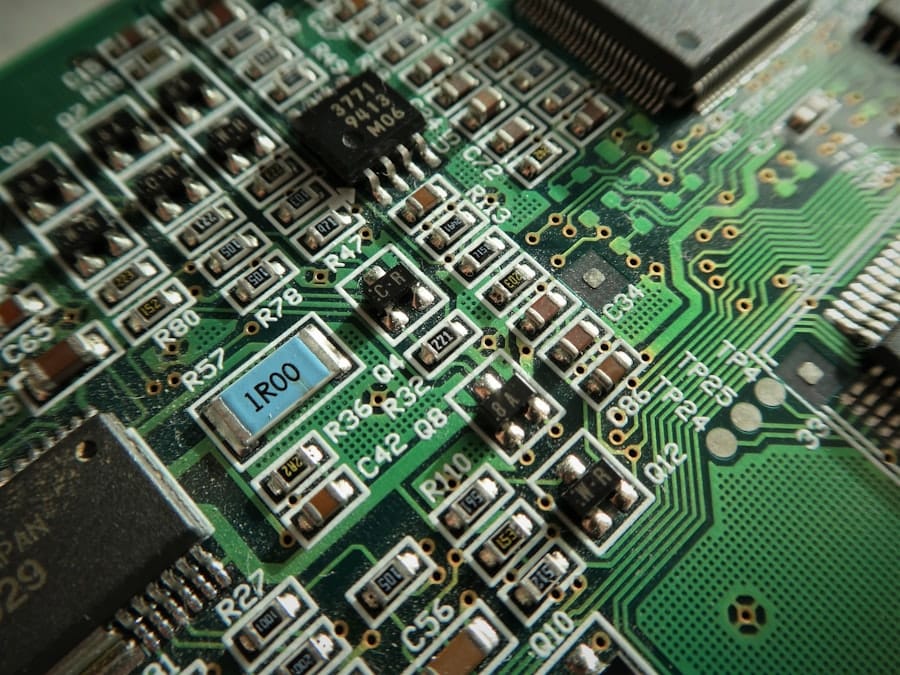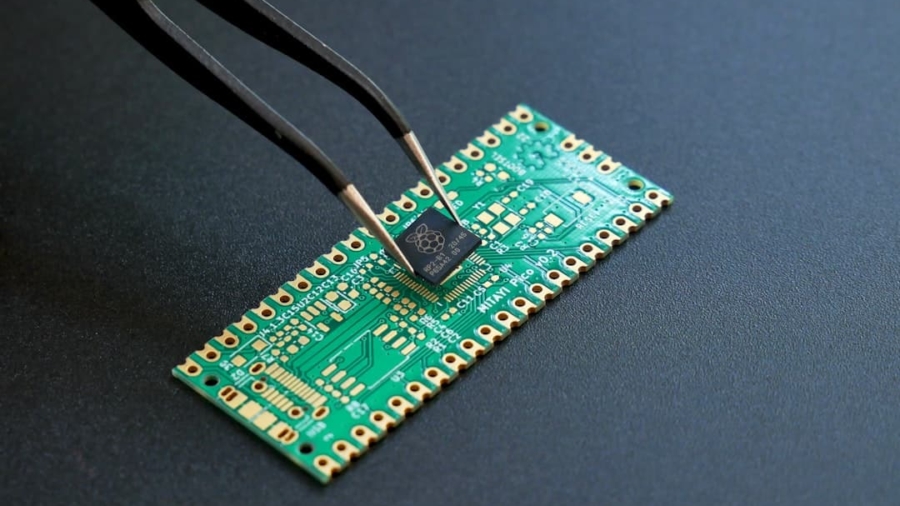Quantum hardware development represents a frontier in the field of computing, where the principles of quantum mechanics are harnessed to create systems that can perform calculations far beyond the capabilities of classical computers. This burgeoning field is not merely an extension of traditional computing; it is a radical departure that leverages the unique properties of quantum bits, or qubits, which can exist in multiple states simultaneously due to superposition. This characteristic allows quantum computers to process vast amounts of information concurrently, offering the potential for breakthroughs in various domains, including cryptography, materials science, and complex system simulations.
The journey into quantum hardware development is marked by significant scientific and engineering challenges. Researchers and engineers are tasked with not only conceptualizing new quantum algorithms but also translating these theoretical constructs into tangible hardware that can operate reliably under real-world conditions. The interplay between theory and practice is crucial, as advancements in quantum algorithms often necessitate corresponding innovations in hardware design and fabrication.
As the field matures, the collaboration between physicists, computer scientists, and engineers becomes increasingly vital to overcome the hurdles that lie ahead.
Key Takeaways
- Quantum hardware development is grounded in complex theoretical principles of quantum computing.
- Practical challenges include maintaining qubit coherence and minimizing error rates.
- Scaling quantum hardware involves managing increased complexity and integration difficulties.
- Quantum error correction and fault tolerance are critical for reliable quantum computation.
- Advances in materials and manufacturing techniques are essential for future quantum hardware progress.
Theoretical Foundations of Quantum Computing
At the heart of quantum computing lies a set of theoretical principles derived from quantum mechanics. The most fundamental of these principles is superposition, which allows qubits to exist in a state of 0, 1, or both simultaneously. This property enables quantum computers to explore multiple solutions to a problem at once, vastly increasing their computational power compared to classical bits, which can only represent a single state at any given time.
Another critical principle is entanglement, a phenomenon where qubits become interconnected in such a way that the state of one qubit can instantaneously affect the state of another, regardless of the distance separating them. This non-locality is not just a theoretical curiosity; it forms the basis for many quantum algorithms that promise exponential speedups over classical counterparts. Quantum gates serve as the building blocks for quantum circuits, analogous to classical logic gates in traditional computing.
These gates manipulate qubits through operations that exploit superposition and entanglement, allowing for complex computations to be performed. The development of quantum algorithms, such as Shor’s algorithm for factoring large numbers and Grover’s algorithm for searching unsorted databases, showcases the potential advantages of quantum computing. However, these theoretical advancements must be translated into practical implementations, which requires a deep understanding of both the underlying physics and the engineering challenges associated with building reliable quantum hardware.
Practical Challenges in Quantum Hardware Development

The transition from theoretical concepts to practical quantum hardware is fraught with challenges that stem from the delicate nature of qubits. One of the most significant issues is decoherence, which occurs when qubits interact with their environment, causing them to lose their quantum properties and revert to classical states. This phenomenon limits the time available for performing computations and poses a substantial barrier to achieving reliable quantum operations.
Researchers are actively exploring various qubit technologies—such as superconducting qubits, trapped ions, and topological qubits—each with its own advantages and vulnerabilities related to decoherence. Another challenge lies in the scalability of quantum systems. While small-scale quantum processors have been successfully demonstrated, scaling these systems to a level where they can outperform classical computers remains an open question.
The complexity of managing a large number of qubits increases exponentially with each additional qubit due to the intricate interconnections required for entanglement and error correction. Moreover, maintaining coherence across a larger number of qubits while minimizing noise and interference from external sources presents significant engineering hurdles that must be addressed before practical quantum computers can become a reality.
Quantum Hardware Scaling and Complexity
Scaling quantum hardware involves not only increasing the number of qubits but also ensuring that they can be effectively controlled and manipulated without introducing errors. As systems grow larger, the complexity of interconnecting qubits increases dramatically. For instance, in superconducting qubit systems, each qubit must be coupled to microwave control lines and readout devices, which can lead to crosstalk and interference if not managed properly.
Researchers are investigating various architectures, such as modular designs that allow for smaller clusters of qubits to be interconnected while minimizing noise and enhancing coherence times. The challenge of scaling is further compounded by the need for robust error correction mechanisms. Quantum error correction codes are essential for protecting quantum information from decoherence and operational errors.
The trade-off between the number of logical qubits available for computation and the overhead required for error correction is a critical consideration in the design of scalable quantum hardware.
Quantum Error Correction and Fault Tolerance
Quantum error correction (QEC) is a cornerstone of practical quantum computing, enabling systems to maintain coherence and perform reliable computations despite the presence of errors. Unlike classical error correction methods that can simply duplicate bits, QEC must leverage the unique properties of quantum mechanics to protect information encoded in qubits. Techniques such as the Shor code and surface codes have been developed to detect and correct errors without directly measuring the qubit states, which would otherwise collapse their superposition.
Fault tolerance is another essential aspect of quantum computing that ensures computations can proceed correctly even in the presence of errors. A fault-tolerant quantum computer must be able to perform operations on logical qubits while simultaneously correcting errors that may occur during computation or measurement processes. Achieving fault tolerance requires careful design considerations, including redundancy in qubit encoding and sophisticated error correction protocols.
The development of fault-tolerant architectures is an active area of research, with ongoing efforts to create systems that can withstand real-world operational challenges while maintaining high fidelity in computations.
Quantum Hardware Manufacturing and Materials

The manufacturing processes and materials used in quantum hardware development play a crucial role in determining the performance and reliability of quantum systems. Different types of qubits require specific materials and fabrication techniques tailored to their unique properties. For instance, superconducting qubits are typically fabricated using thin films of superconducting materials like niobium or aluminum deposited on silicon substrates.
The quality of these materials directly impacts coherence times and gate fidelities. In contrast, trapped ion qubits rely on laser cooling techniques to manipulate ions suspended in electromagnetic fields. The precision required in aligning optical components and controlling laser frequencies presents its own set of manufacturing challenges.
Additionally, emerging technologies such as topological qubits are exploring novel materials like topological insulators that could potentially offer greater robustness against decoherence due to their inherent topological properties. As research progresses, advancements in material science will continue to influence the trajectory of quantum hardware development.
Quantum Hardware Integration and Interfacing
Integrating various components of quantum hardware into a cohesive system is a complex task that requires careful consideration of both electrical and optical interfaces. Quantum processors must be interfaced with classical control systems that manage qubit operations while ensuring minimal interference from classical noise sources.
Moreover, developing efficient readout mechanisms is critical for extracting information from qubits without disturbing their states. Techniques such as dispersive readout for superconducting qubits allow for rapid measurement while preserving coherence, but they require precise calibration and synchronization with control signals. As quantum systems evolve towards larger scales, seamless integration between classical and quantum components will be essential for achieving practical applications.
Future Prospects and Opportunities in Quantum Hardware Development
The future landscape of quantum hardware development is poised for transformative advancements as researchers continue to push the boundaries of what is possible with quantum technology. The convergence of interdisciplinary fields—ranging from materials science to computer engineering—will likely yield innovative solutions to existing challenges in scalability, error correction, and integration. As companies invest heavily in developing commercially viable quantum computers, there is an increasing emphasis on creating hybrid systems that combine classical and quantum processing capabilities.
Moreover, as more industries recognize the potential applications of quantum computing—from drug discovery to optimization problems—the demand for robust quantum hardware will grow exponentially. This presents opportunities for startups and established companies alike to carve out niches within this emerging market. Collaborative efforts between academia and industry will be crucial in accelerating progress toward practical quantum solutions that can address real-world problems across various sectors.
In summary, while significant challenges remain in the realm of quantum hardware development, ongoing research and innovation hold great promise for unlocking the full potential of quantum computing technology. As we stand on the brink of this new era in computation, the possibilities seem boundless, paving the way for breakthroughs that could redefine our understanding of information processing itself.
Quantum hardware development is a complex field that encounters unique challenges, particularly in terms of scalability and error correction. For those interested in exploring how technology impacts various industries, a related article on the best software for NDIS providers can provide insights into how software solutions are evolving to meet specific needs. You can read more about it in this article: Best Software for NDIS Providers: A Comprehensive Guide.
FAQs
What is quantum hardware?
Quantum hardware refers to the physical devices and components used to build quantum computers, including qubits, quantum gates, and control systems that manipulate quantum information.
Why is developing quantum hardware more challenging than classical hardware?
Quantum hardware development is challenging due to the fragile nature of qubits, the need for extremely low temperatures, precise control of quantum states, and the difficulty in scaling up the number of qubits while maintaining coherence and error rates.
What are qubits and why are they important in quantum hardware?
Qubits are the basic units of quantum information, analogous to bits in classical computing. Unlike bits, qubits can exist in superposition states, enabling quantum computers to perform complex calculations more efficiently.
What environmental conditions are required for quantum hardware to function properly?
Quantum hardware often requires ultra-low temperatures close to absolute zero, high vacuum environments, and shielding from electromagnetic interference to preserve qubit coherence and reduce noise.
How does qubit coherence affect quantum hardware performance?
Qubit coherence time is the duration a qubit maintains its quantum state. Longer coherence times allow for more complex computations, while short coherence times lead to errors and limit the effectiveness of quantum algorithms.
What role does error correction play in quantum hardware development?
Quantum error correction is essential to detect and fix errors caused by decoherence and noise. Developing reliable error correction methods is a major challenge because it requires additional qubits and complex protocols.
Are there different types of quantum hardware technologies?
Yes, common quantum hardware technologies include superconducting qubits, trapped ions, topological qubits, and photonic systems, each with unique advantages and challenges.
Why is scaling quantum hardware to more qubits difficult?
Scaling is difficult because increasing the number of qubits often leads to more noise, crosstalk, and control complexity, making it harder to maintain coherence and perform accurate quantum operations.
How does quantum hardware development impact the future of computing?
Advancements in quantum hardware could enable breakthroughs in cryptography, optimization, material science, and drug discovery by solving problems that are currently intractable for classical computers.
What are the current limitations of quantum hardware?
Current limitations include short qubit coherence times, high error rates, limited qubit connectivity, and challenges in manufacturing and controlling large-scale quantum systems.

